After the storm of recession, dead calm. Sales have flattened for the top 50 fmcg giants of today
but a few are
speeding along, writes James Ball
As recession battered global markets, the world's biggest fmcg companies proved their mettle. Huge, efficient and diverse, they ploughed through 2008's economic storm as with 2007's spiralling inflation virtually unscathed.
So, with the black clouds retreating, the relative calm of 2009 would be no challenge right?
Wrong. The Global 50, compiled by OC&C Strategy Consultants, are labouring under some of the toughest conditions yet: stagnant consumer demand, volatile commodity prices and on a scale not seen before slick and effective local competition in emerging markets.
Overall sales growth dropped from 13.3% in 2008 to just 0.6% in 2009, while SAB Miller, Dean Foods and FrieslandCampina saw double-digit sales declines. Four of the five biggest grocery companies experienced a dive in sales. Proft margins also suffered, down from 17.4% to 17.0%.
But OC&C partner Will Hayllar points out that much of the slump in sales is accounted for by adverse currency effects and tumbling commodity prices in the second half of 2009. Organic growth, he says, averaged a much healthier 3%, though down from 6% in 2008.
"The degree of sales slowdown was much sharper than expected for the biggest companies," he says. "The better news is that falling margins are largely due to one-off restructuring costs and writedowns underlying profit margins excluding one-off effects actually rose by 0.7% points, showing the top fmcg companies are taking the steps needed to make sure they remain efficient and competitive."
Commercial teams, administration and production have borne the brunt of the fmcg giants' cost cutting, Hayllar says, with restructuring costs substantially above recent trends as typified in the UK by Diageo's Scottish factory closures and Kraft upholding the decision by Cadbury management to close its Somerdale factory reversing a pledge made during the takeover process.
The Top 50 have moved energetically to trim any fat they can find, but The Grocer's research shows there's no sign of a bunker mentality, as R&D spend and marketing investment both essential for long-term growth held steady.
While global ad spend across the economy has slumped, the Top 50 fmcg companies cut theirs by just 0.1% of sales from 6.3% to 6.2% showing that, in the words of one Evolutions Securities analyst, "these companies are playing for the long term".
That's not to say marketing activity isn't changing: spend has moved away from high-cost conventional advertising towards innovative social media and corporate social responsibility drives. Some 65% of the Global 50 have Facebook accounts, while 50% are on Twitter.
This has occasionally backfired: Nestlé was forced to issue an apology this year after an employee posted passive-aggressive messages to palm oil activists on its Facebook page such as "Oh please ... it's like we're censoring everything to allow only positive comments".
This, and its efforts to have doctored versions of the Nestlé logo removed from Facebook, ignited a "Twitstorm" that led to a string of damaging stories in the mainstream media despite Nestlé's pledges to switch to sustainably sourced palm oil.
Generally speaking, though, efforts in both CSR and social media have been more successful. AB InBev, traditionally a volume operator rather than a sustained innovator, has engaged heavily in both. UK advertising of premium lager brand Stella Artois has centred on environmental and sustainability issues all year, particularly the recent launch of lightweight bottles.
Globally, the company has tried to use social media to leverage Budweiser's sponsorship of the World Cup by unveiling a Budweiser United online platform alongside the competition.
Even Nestlé managed to turn around its social media faux pas: rather than issue a standard, formal, corporate apology, the company's social media PR said sorry directly, through social media channels and the fire rapidly died down. "This [deleting logos] was one in a series of mistakes for which I would like to apologise," the unfortunate PR wrote. "And for being rude. We've stopped deleting posts, and I have stopped being rude."
Commitment to innovation is, if anything, even stronger: weighted average R&D spend grew a hefty 6.4% over the year, with almost two-thirds of companies upping their spend year-on-year.
An overwhelming 93% of the biggest fmcg companies said they had an increased focus on R&D activity in the past year. This was particularly noticeable at the top: seven of the 10 biggest R&D spenders increased their research funding as a proportion of sales over the year.
Two-thirds of the top companies continued to cite premiumisation as a major driver of innovation, but value investment also evolved. While the Top 50's initial response to slack consumer demand in developed markets was to fiddle with pack sizes and ramp up promotions, that response has evolved, with the fmcg giants engineering new products for new price points.
The trend is illustrated by Proctor & Gamble's response to the flattening of male personal care sales growth in 2009. It launched disposable Mach 3 razors to target the value-orientated male market, while continuing to launch premium products for women, including Venus Embrace and the hugely successful Olay Pro-X.
Innovation hasn't been restricted to developed markets, though. Unilever one of the biggest R&D spenders in the Top 50 opened a $72m R&D facility in Shanghai last September, its second in the developing world.
"The fast consumable industry relies heavily on repeated consumption, so market size is important to us," says CEO Paul Polman. "With a population of 1.3 billion, China is a huge potential market, and this is why Unilever attaches priority to it."
Such investment may be needed. Despite the popular image of big multinationals trampling local competition in emerging markets, the reality is far different: last year, local competition outgrew the Top 50 in emerging markets by a huge margin.
This isn't a side issue for the fmcg giants. Emerging markets matter. About half of Unilever's sales, for example, come from them, while Cadbury's commanding position in India and South America was widely believed to be what attracted Kraft. With stagnant demand in the developed world, emerging markets are the primary driver of growth for the top players.
They're still delivering: average growth in emerging markets for the Top 50 companies was 5.7% nine times the 0.6% overall sales growth reported. However, grocery markets grew a hefty 14% in the same countries over the year meaning that, relatively speaking, the Top 50 are losing share in the key emerging battlegrounds.
The picture wasn't universal though: five companies BAT, Reckitt Benckiser, Imperial Tobacco, Cadbury and Carlsberg managed to outperform overall growth in emerging markets, gaining share despite the overall trend. The Kraft/Cadbury merger, by far the largest deal of the past 12 months, gives Kraft dominant market positions in seven separate emerging markets, well ahead of second-placed Mars (four).
That two of the five businesses were tobacco groups struggling against duty fraud, counterfeiting and emerging tobacco brands in developing markets is also worthy of note. Emerging markets account for 51% of Imperial Tobacco's cigarette volumes, and last year the group delivered strong results in Africa, increasing its share of many African markets with its Excellence and Fine local brands.
The Top 50 is no longer the exclusive province of the developed world, either. For only the second year, two developing market players are in the rankings. Brazilian beef processing giant JBS hit 39th place this year, while Mexican baker Grupo Bimbo came in at 41st.
Both companies have even been buying up developed-market rivals: JBS bought US meat packer Swift & Co in 2007, while Grupo Bimbo bought Weston Foods in 2008 for $2.8bn (£1.9bn), making it one of the largest bread businesses in the US.
"This transaction is the most important in Grupo Bimbo's history and one of the largest in the bread industry," said CEO Daniel Servitje as the transaction closed. "Size alone, however, is not our main objective. Rather, our vision is to become the best baking company, and we further that goal today by demonstrating a commitment and dedication to serving our consumers."
Interestingly, the rationale for the deal was to use Weston's distribution network to give Grupo Bimbo's Hispanic bread brands more penetration into US markets to target the South American immigrants the company knew best how to cater for.
Despite the once-in-a-decade nature of that transaction, OC&C refuses to rule out the possibility of a follow-up next year, as the Top 50 look to adapt and re-engineer to hold their dominant positions.
"Though it is always hard to pinpoint where big consolidation might happen, it wouldn't come as a surprise over the next year," says OC&C's Hayllar. "Ideas are bounding around in the beer market, for example, that companies are running the slide rule over Foster's.
"As the consumer environment has stabilised, businesses are starting to get a decent track record of their performance in the new environment, making multibillion pound deals less of a risk." This point is supported by the success of InBev's acquisition of Anheuser-Busch and Heineken's move to snap up Scottish & Newscastle their margins have improved by eight and four basis points respectively.
The broader climate for the next 12 months is less welcoming, but looks set to be less tumultuous than those just past. Consumer demand is unlikely to bounce back in the year ahead, but the UK's drastic fiscal tightening is not likely to be replicated in most markets a relief to the Top 50.
Commodity price forecasts are less promising. Margins suffered in 2009 despite falling commodity costs, but these are no more. The United Nations Food and Agriculture Organisation, working with the Organisation for Economic Co-operation and Development, says prices will top those hit in the 2007/8 price spikes and warns short-term volatility looks set to continue, albeit on a lesser scale than seen before. The FAO also warned that companies needed to keep an eye on more policies than before.
"The role of developing countries in international markets is growing quickly, and, as their impact grows, their policies also have an increasing bearing on conditions in global markets," says FAO director-general Jacques Diouf.
The storm of 2008 may have passed but the outlook is far from plain sailing for the Global 50. They'll have to keep thinking fast if they are to prevail against the plucky upstarts, tricky headwinds and changeable conditions on the horizon.
The innovators: Biggest growth in r&D spend
AB InBev
Growth in R&D spend: 112.0%
AB InBev has historically spent relatively little on R&D just $20m in 2007 but in 2009 the brewer splashed out $159m. The fruits of this spending in the UK have been the shift towards 4% variants of its Beck's and Stella brands. The launch of Bud 66, scheduled for late August, will continue this trend.
Dean Foods
Growth in R&D spend: 82.1%
US dairy processing giant Dean Foods hasn't been known for heavy investment in R&D, but its tactics have changed dramatically in recent years. The company last year bought Alpro Europe's largest soy milk brand from Vandemoortele Group for E325m, and soy now leads the company's R&D drive.
ConAgra
Growth in R&D spend: 17.5%
ConAgra is best known in the UK as a milling company, but its frozen foods divisions are driving its research in the US. Like UK equivalent Birds Eye, ConAgra has been focusing much of its efforts on perfecting frozen vegetables and microwave cooking. It has also been supporting its M&A activity such as its recent purchase of American Pie with heightened R&D spending.
Reckitt Benckiser
Growth in R&D spend: 16.2%
Household cleaning the category Reckitt is best known for thanks to products such as Cillit Bang is an area that needs heavy R&D activity to maintain shoppers' attention. Reckitt's tight, consumer-focused R&D efforts are well-rated in the industry and the recent expansion of its research hubs reflect Reckitt's efforts to stay ahead of the game.
Cadbury
Growth in R&D spend: 15.9%
Cadbury's final year as an independent company was marked by a raft of successful NPD. In the UK alone, it launched new products under The Natural Confectionery Company sub-brand, as well as the Cadbury Nibbles range and Extra Strong Gum. Emerging market NPD was even more rapid, especially in the Indian territory.
New shores: the growing giants of the emerging world
Grupo Bimbo
Mexico's largest food company, Bimbo is also the world's biggest baker. After buying out US baker Weston Foods in 2008, Bimbo has been using its wider reach to supply its successful South American brands to the 47 million Hispanic consumers in the US.
JBS
The largest player from an emerging market in the Top 50, Brazil's JBS has risen to the 39 spot in its second year on the list. The world's largest beef company bought US meat processor Swift & Co in 2007, and in 2009 snapped up domestic rival Grupo Bertin.
SAB Miller
SAB's emerging market sales may have dipped 4% in 2009, but much of that was due to currency effects. With 84% of its sales in developing markets compared with AB InBev's 44% SAB needn't panic: such regions are recovering fast from the recession.
Cadbury
Cadbury is one of just five in the Top 50 to have grown emerging market share in 2009 (by 20%). Its Indian arm is the jewel in its crown, with sales doubling every three years, and profits every four. At that rate, in 10 years India will be bigger than the UK business.
British American Tobacco
Emerging markets have long been critical to BAT. Its recent efforts to stamp out smuggling and counterfeiting in China seem to be paying off: emerging market sales grew 40% in 2009, more than any other Top 50 company.
Thrivers: the five speediest growers
AB InBev
Grocery sales: $36.8bn
Growth: 56%
The world's biggest brewer is also 2009's fastest grower, thanks to its 2008 buyout of Anheuser-Busch. Organic growth actually stood at 2.5% for the year, but margins were levered up from 23% in 2008 to 31% in 2009. In the UK, Stella has been revived by the launch of Stella 4%. Bud is also going great guns.
Grupo Bimbo
Grocery sales: $8.6bn
Growth: 41%
Only the second year the Mexican baker has made the Top 50, but its $2.8bn acquisition of US firm Weston Foods has made it the year's second fastest grower. The group is using its knowledge of the Hispanic market to rapidly grow share in the US, diversifying out of its South American heartland.
Imperial Tobacco
Grocery sales: $10.6bn
Growth: 30%
Though boosted slightly by the buyout of cigar maker Altadis, and buffeted by currency headwinds, Imperial's growth in 2009 was largely organic and was primarily down to its solid standing at the value end of the market. As a result it has often benefitted from downtrading in developed markets.
British American Tobacco
Grocery sales: $22.2bn
Growth: 17%
BAT enjoyed a strong 2009 but, due to its higher-end positioning in some markets, was hit by the effects of rising unemployment and economic stagnation. Its strong Russian presence proved a slight dampener on sales, but was not enough to offset an otherwise solid year.
GlaxoSmithKline
Grocery sales: $7.3bn
Growth: 17%
Strong grocery sales did little to offset a tough year for GSK, the world's second-biggest pharmaceutical company. Over-the-counter medicines and other fmcg sales did well but key drugs coming off patent forced the firm to announce a round of layoffs alongside its 2009 results.
As recession battered global markets, the world's biggest fmcg companies proved their mettle. Huge, efficient and diverse, they ploughed through 2008's economic storm as with 2007's spiralling inflation virtually unscathed.
So, with the black clouds retreating, the relative calm of 2009 would be no challenge right?
Wrong. The Global 50, compiled by OC&C Strategy Consultants, are labouring under some of the toughest conditions yet: stagnant consumer demand, volatile commodity prices and on a scale not seen before slick and effective local competition in emerging markets.
Overall sales growth dropped from 13.3% in 2008 to just 0.6% in 2009, while SAB Miller, Dean Foods and FrieslandCampina saw double-digit sales declines. Four of the five biggest grocery companies experienced a dive in sales. Proft margins also suffered, down from 17.4% to 17.0%.
But OC&C partner Will Hayllar points out that much of the slump in sales is accounted for by adverse currency effects and tumbling commodity prices in the second half of 2009. Organic growth, he says, averaged a much healthier 3%, though down from 6% in 2008.
"The degree of sales slowdown was much sharper than expected for the biggest companies," he says. "The better news is that falling margins are largely due to one-off restructuring costs and writedowns underlying profit margins excluding one-off effects actually rose by 0.7% points, showing the top fmcg companies are taking the steps needed to make sure they remain efficient and competitive."
Commercial teams, administration and production have borne the brunt of the fmcg giants' cost cutting, Hayllar says, with restructuring costs substantially above recent trends as typified in the UK by Diageo's Scottish factory closures and Kraft upholding the decision by Cadbury management to close its Somerdale factory reversing a pledge made during the takeover process.
The Top 50 have moved energetically to trim any fat they can find, but The Grocer's research shows there's no sign of a bunker mentality, as R&D spend and marketing investment both essential for long-term growth held steady.
While global ad spend across the economy has slumped, the Top 50 fmcg companies cut theirs by just 0.1% of sales from 6.3% to 6.2% showing that, in the words of one Evolutions Securities analyst, "these companies are playing for the long term".
That's not to say marketing activity isn't changing: spend has moved away from high-cost conventional advertising towards innovative social media and corporate social responsibility drives. Some 65% of the Global 50 have Facebook accounts, while 50% are on Twitter.
This has occasionally backfired: Nestlé was forced to issue an apology this year after an employee posted passive-aggressive messages to palm oil activists on its Facebook page such as "Oh please ... it's like we're censoring everything to allow only positive comments".
This, and its efforts to have doctored versions of the Nestlé logo removed from Facebook, ignited a "Twitstorm" that led to a string of damaging stories in the mainstream media despite Nestlé's pledges to switch to sustainably sourced palm oil.
Generally speaking, though, efforts in both CSR and social media have been more successful. AB InBev, traditionally a volume operator rather than a sustained innovator, has engaged heavily in both. UK advertising of premium lager brand Stella Artois has centred on environmental and sustainability issues all year, particularly the recent launch of lightweight bottles.
Globally, the company has tried to use social media to leverage Budweiser's sponsorship of the World Cup by unveiling a Budweiser United online platform alongside the competition.
Even Nestlé managed to turn around its social media faux pas: rather than issue a standard, formal, corporate apology, the company's social media PR said sorry directly, through social media channels and the fire rapidly died down. "This [deleting logos] was one in a series of mistakes for which I would like to apologise," the unfortunate PR wrote. "And for being rude. We've stopped deleting posts, and I have stopped being rude."
Commitment to innovation is, if anything, even stronger: weighted average R&D spend grew a hefty 6.4% over the year, with almost two-thirds of companies upping their spend year-on-year.
An overwhelming 93% of the biggest fmcg companies said they had an increased focus on R&D activity in the past year. This was particularly noticeable at the top: seven of the 10 biggest R&D spenders increased their research funding as a proportion of sales over the year.
Two-thirds of the top companies continued to cite premiumisation as a major driver of innovation, but value investment also evolved. While the Top 50's initial response to slack consumer demand in developed markets was to fiddle with pack sizes and ramp up promotions, that response has evolved, with the fmcg giants engineering new products for new price points.
The trend is illustrated by Proctor & Gamble's response to the flattening of male personal care sales growth in 2009. It launched disposable Mach 3 razors to target the value-orientated male market, while continuing to launch premium products for women, including Venus Embrace and the hugely successful Olay Pro-X.
Innovation hasn't been restricted to developed markets, though. Unilever one of the biggest R&D spenders in the Top 50 opened a $72m R&D facility in Shanghai last September, its second in the developing world.
"The fast consumable industry relies heavily on repeated consumption, so market size is important to us," says CEO Paul Polman. "With a population of 1.3 billion, China is a huge potential market, and this is why Unilever attaches priority to it."
Such investment may be needed. Despite the popular image of big multinationals trampling local competition in emerging markets, the reality is far different: last year, local competition outgrew the Top 50 in emerging markets by a huge margin.
This isn't a side issue for the fmcg giants. Emerging markets matter. About half of Unilever's sales, for example, come from them, while Cadbury's commanding position in India and South America was widely believed to be what attracted Kraft. With stagnant demand in the developed world, emerging markets are the primary driver of growth for the top players.
They're still delivering: average growth in emerging markets for the Top 50 companies was 5.7% nine times the 0.6% overall sales growth reported. However, grocery markets grew a hefty 14% in the same countries over the year meaning that, relatively speaking, the Top 50 are losing share in the key emerging battlegrounds.
The picture wasn't universal though: five companies BAT, Reckitt Benckiser, Imperial Tobacco, Cadbury and Carlsberg managed to outperform overall growth in emerging markets, gaining share despite the overall trend. The Kraft/Cadbury merger, by far the largest deal of the past 12 months, gives Kraft dominant market positions in seven separate emerging markets, well ahead of second-placed Mars (four).
That two of the five businesses were tobacco groups struggling against duty fraud, counterfeiting and emerging tobacco brands in developing markets is also worthy of note. Emerging markets account for 51% of Imperial Tobacco's cigarette volumes, and last year the group delivered strong results in Africa, increasing its share of many African markets with its Excellence and Fine local brands.
The Top 50 is no longer the exclusive province of the developed world, either. For only the second year, two developing market players are in the rankings. Brazilian beef processing giant JBS hit 39th place this year, while Mexican baker Grupo Bimbo came in at 41st.
Both companies have even been buying up developed-market rivals: JBS bought US meat packer Swift & Co in 2007, while Grupo Bimbo bought Weston Foods in 2008 for $2.8bn (£1.9bn), making it one of the largest bread businesses in the US.
"This transaction is the most important in Grupo Bimbo's history and one of the largest in the bread industry," said CEO Daniel Servitje as the transaction closed. "Size alone, however, is not our main objective. Rather, our vision is to become the best baking company, and we further that goal today by demonstrating a commitment and dedication to serving our consumers."
Interestingly, the rationale for the deal was to use Weston's distribution network to give Grupo Bimbo's Hispanic bread brands more penetration into US markets to target the South American immigrants the company knew best how to cater for.
Despite the once-in-a-decade nature of that transaction, OC&C refuses to rule out the possibility of a follow-up next year, as the Top 50 look to adapt and re-engineer to hold their dominant positions.
"Though it is always hard to pinpoint where big consolidation might happen, it wouldn't come as a surprise over the next year," says OC&C's Hayllar. "Ideas are bounding around in the beer market, for example, that companies are running the slide rule over Foster's.
"As the consumer environment has stabilised, businesses are starting to get a decent track record of their performance in the new environment, making multibillion pound deals less of a risk." This point is supported by the success of InBev's acquisition of Anheuser-Busch and Heineken's move to snap up Scottish & Newscastle their margins have improved by eight and four basis points respectively.
The broader climate for the next 12 months is less welcoming, but looks set to be less tumultuous than those just past. Consumer demand is unlikely to bounce back in the year ahead, but the UK's drastic fiscal tightening is not likely to be replicated in most markets a relief to the Top 50.
Commodity price forecasts are less promising. Margins suffered in 2009 despite falling commodity costs, but these are no more. The United Nations Food and Agriculture Organisation, working with the Organisation for Economic Co-operation and Development, says prices will top those hit in the 2007/8 price spikes and warns short-term volatility looks set to continue, albeit on a lesser scale than seen before. The FAO also warned that companies needed to keep an eye on more policies than before.
"The role of developing countries in international markets is growing quickly, and, as their impact grows, their policies also have an increasing bearing on conditions in global markets," says FAO director-general Jacques Diouf.
The storm of 2008 may have passed but the outlook is far from plain sailing for the Global 50. They'll have to keep thinking fast if they are to prevail against the plucky upstarts, tricky headwinds and changeable conditions on the horizon.
The innovators: Biggest growth in r&D spend
AB InBev
Growth in R&D spend: 112.0%
AB InBev has historically spent relatively little on R&D just $20m in 2007 but in 2009 the brewer splashed out $159m. The fruits of this spending in the UK have been the shift towards 4% variants of its Beck's and Stella brands. The launch of Bud 66, scheduled for late August, will continue this trend.
Dean Foods
Growth in R&D spend: 82.1%
US dairy processing giant Dean Foods hasn't been known for heavy investment in R&D, but its tactics have changed dramatically in recent years. The company last year bought Alpro Europe's largest soy milk brand from Vandemoortele Group for E325m, and soy now leads the company's R&D drive.
ConAgra
Growth in R&D spend: 17.5%
ConAgra is best known in the UK as a milling company, but its frozen foods divisions are driving its research in the US. Like UK equivalent Birds Eye, ConAgra has been focusing much of its efforts on perfecting frozen vegetables and microwave cooking. It has also been supporting its M&A activity such as its recent purchase of American Pie with heightened R&D spending.
Reckitt Benckiser
Growth in R&D spend: 16.2%
Household cleaning the category Reckitt is best known for thanks to products such as Cillit Bang is an area that needs heavy R&D activity to maintain shoppers' attention. Reckitt's tight, consumer-focused R&D efforts are well-rated in the industry and the recent expansion of its research hubs reflect Reckitt's efforts to stay ahead of the game.
Cadbury
Growth in R&D spend: 15.9%
Cadbury's final year as an independent company was marked by a raft of successful NPD. In the UK alone, it launched new products under The Natural Confectionery Company sub-brand, as well as the Cadbury Nibbles range and Extra Strong Gum. Emerging market NPD was even more rapid, especially in the Indian territory.
New shores: the growing giants of the emerging world
Grupo Bimbo
Mexico's largest food company, Bimbo is also the world's biggest baker. After buying out US baker Weston Foods in 2008, Bimbo has been using its wider reach to supply its successful South American brands to the 47 million Hispanic consumers in the US.
JBS
The largest player from an emerging market in the Top 50, Brazil's JBS has risen to the 39 spot in its second year on the list. The world's largest beef company bought US meat processor Swift & Co in 2007, and in 2009 snapped up domestic rival Grupo Bertin.
SAB Miller
SAB's emerging market sales may have dipped 4% in 2009, but much of that was due to currency effects. With 84% of its sales in developing markets compared with AB InBev's 44% SAB needn't panic: such regions are recovering fast from the recession.
Cadbury
Cadbury is one of just five in the Top 50 to have grown emerging market share in 2009 (by 20%). Its Indian arm is the jewel in its crown, with sales doubling every three years, and profits every four. At that rate, in 10 years India will be bigger than the UK business.
British American Tobacco
Emerging markets have long been critical to BAT. Its recent efforts to stamp out smuggling and counterfeiting in China seem to be paying off: emerging market sales grew 40% in 2009, more than any other Top 50 company.
Thrivers: the five speediest growers
AB InBev
Grocery sales: $36.8bn
Growth: 56%
The world's biggest brewer is also 2009's fastest grower, thanks to its 2008 buyout of Anheuser-Busch. Organic growth actually stood at 2.5% for the year, but margins were levered up from 23% in 2008 to 31% in 2009. In the UK, Stella has been revived by the launch of Stella 4%. Bud is also going great guns.
Grupo Bimbo
Grocery sales: $8.6bn
Growth: 41%
Only the second year the Mexican baker has made the Top 50, but its $2.8bn acquisition of US firm Weston Foods has made it the year's second fastest grower. The group is using its knowledge of the Hispanic market to rapidly grow share in the US, diversifying out of its South American heartland.
Imperial Tobacco
Grocery sales: $10.6bn
Growth: 30%
Though boosted slightly by the buyout of cigar maker Altadis, and buffeted by currency headwinds, Imperial's growth in 2009 was largely organic and was primarily down to its solid standing at the value end of the market. As a result it has often benefitted from downtrading in developed markets.
British American Tobacco
Grocery sales: $22.2bn
Growth: 17%
BAT enjoyed a strong 2009 but, due to its higher-end positioning in some markets, was hit by the effects of rising unemployment and economic stagnation. Its strong Russian presence proved a slight dampener on sales, but was not enough to offset an otherwise solid year.
GlaxoSmithKline
Grocery sales: $7.3bn
Growth: 17%
Strong grocery sales did little to offset a tough year for GSK, the world's second-biggest pharmaceutical company. Over-the-counter medicines and other fmcg sales did well but key drugs coming off patent forced the firm to announce a round of layoffs alongside its 2009 results.




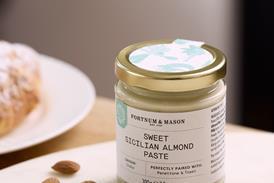




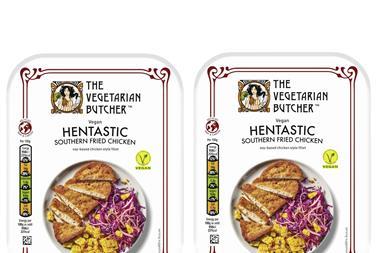
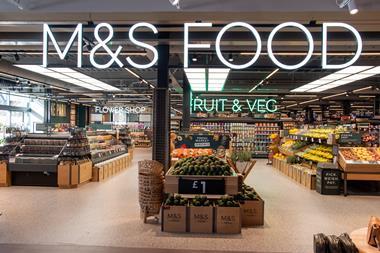

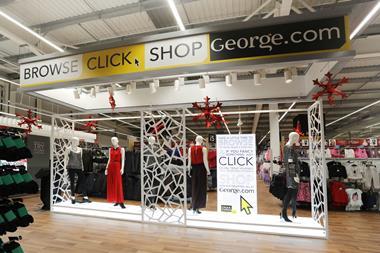


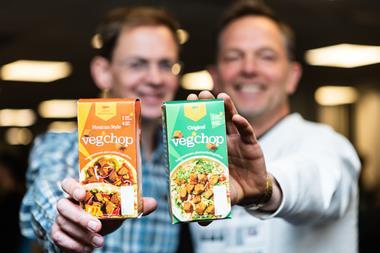
No comments yet